The sitcom ended up being named “The Doris Day Show” – which gave her a certain amount of pull when it came to how everything went behind (and in) the scenes.
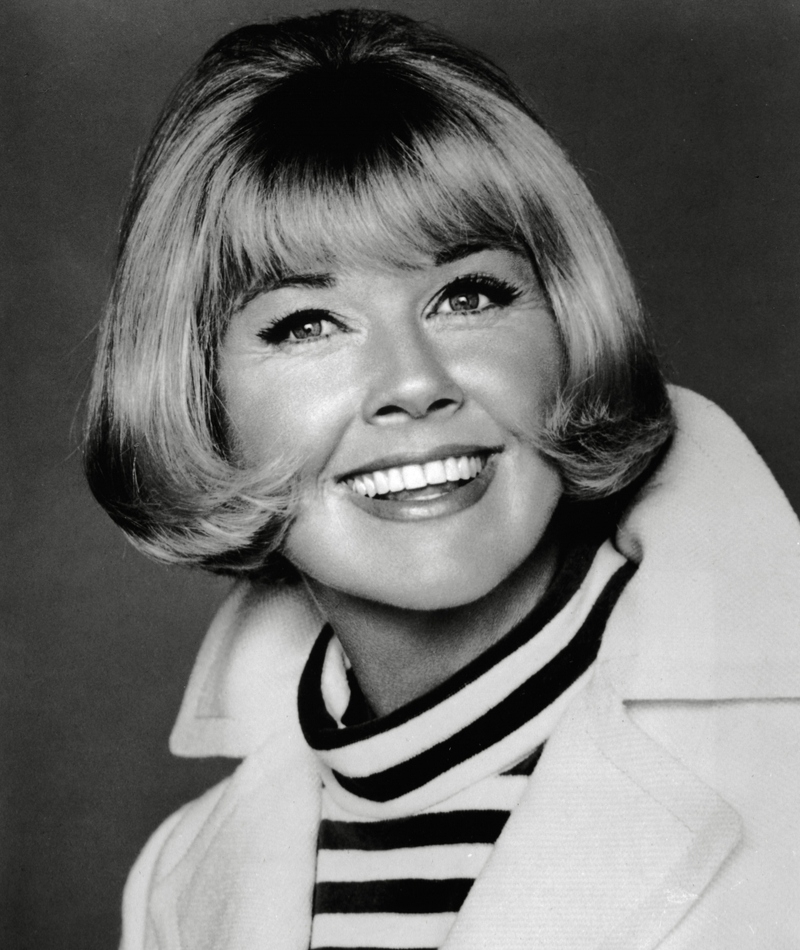
In fact, she was free to do basically anything she wanted when it came to how a majority of things went, such as the script and actors.
Love at First Sight?
Who would have known what the world would be in for after that fateful day in 1930, when 19-year old Bonnie Parker first laid her eyes upon 21-year old bad boy, Clyde Barrow?

But a lot of things had to happen before they would find themselves together. In fact, Bonnie was already spoken for at the time - with a ring on her finger and everything.
She Was Already Married
It seems as young Bonnie had a thing for troublemakers. The day she met Clyde, she may have appeared single, since her husband wasn’t on her arm or anything.

But that’s because her husband at the time was in prison - for murder.
Clyde Was Already a Troublemaker
Maybe she could tell at the time that Clyde was another type that would keep things exciting for her, in the dangerous, may-get-you-killed kind of way.

If she couldn’t, she would find out just a few months after meeting him when he wound up in prison himself. He went away for two years for multiple robberies he’d committed.
She Waited for Him
Perhaps Clyde was able to keep his head up during his sentence because he knew Bonnie would be waiting for him. And, if he didn’t, he was pleasantly surprised when he found her with arms open after his release in 1932.

Even though Bonnie may not have been into criminal activity just yet, she was teetering on the edge by getting involved with Clyde.
They Created Their Own Gang
Soon, she found herself completely immersed in the gang life. The couple gained so much notoriety for their criminal activity that they formed their own gang.

The Barrow Gang, as they came to be known, quickly became infamous in Texas.
Then She Got Arrested
Not long after Bonnie became involved in the gang’s inner workings, she wound up in the slammer. She was picked up for a gun robbery and served a three-month sentence before being released.

Of course, they had no intentions of slowing down. If anything, they were ready to take things to the next level.
True Texans Through and Through
Bonnie and Clyde were both born and raised in Texas. And that’s where they spent the majority of their lives, including a ton of their criminal exploits. But soon, they’d grown tired of robbing banks in their state alone.

They prepared to take the gang on the road, and they headed north.
Wanted in Many States
As the crimes grew, the money grew, which in turn made more people want to join them in their activities. It soon became somewhat of a family business, with Clyde’s brother and his wife hopping on board.

The string of crimes by the Barrow Gang led all the way from Texas to Minnesota.
Someone Tipped the Authorities
Even though things may have started off rough for the couple, with Clyde winding up in prison for the first two years they knew each other, things had turned around.

They were getting away with everything on a cross-country crime spree. But that all changed when the authorities received a tip in 1933. One that would lead them straight to the gang’s hideout in Missouri.
They Left Behind Some Evidence
Bonnie and Clyde had been able to get out of the safehouse before the police arrived, so they were safe for now. Except they hadn’t had time to clear out all of their belongings, and they left something behind that authorities were going to have a field day with.

The couple had been documenting their journey on film – and they left a couple of rolls behind for them to find. Authorities were probably a combination of amused and surprised to have found the photos, which all painted a very bright picture of the people behind all of these heartless crimes.
Maybe the Most Iconic Female Criminal Ever
Up until that point, there hadn’t been very many published instances of female criminals. Everyone was just invested and interested in her. They wanted to know more about her, and do you blame them?

Above is one of her most famous photos found on the rolls, which perfectly displays her personality.
People Loved Them
The Barrow Gang took the western world by storm. They were all over the newspapers, and even though they were committing crimes, people seemed to fall in love with them.

There was something very romantic about this young couple who would do anything for each other – even if that meant spilling blood.
They Were Ambushed
During their crime-filled ride through Missouri, something happened that put some fear into the young lovers. In July of 1933, Bonnie and Clyde were with Buck and Blanch when they were ambushed by Highway Patrol officers.

There was a shoot-out, and Buck didn’t make it out alive, and Blanche was taken in.
The Wheels Started to Fall Off
Even though the public had been fascinated with the dangerous young couple, they were starting to get fed up. They were causing too much damage, and the public didn’t feel safe with them on the loose.
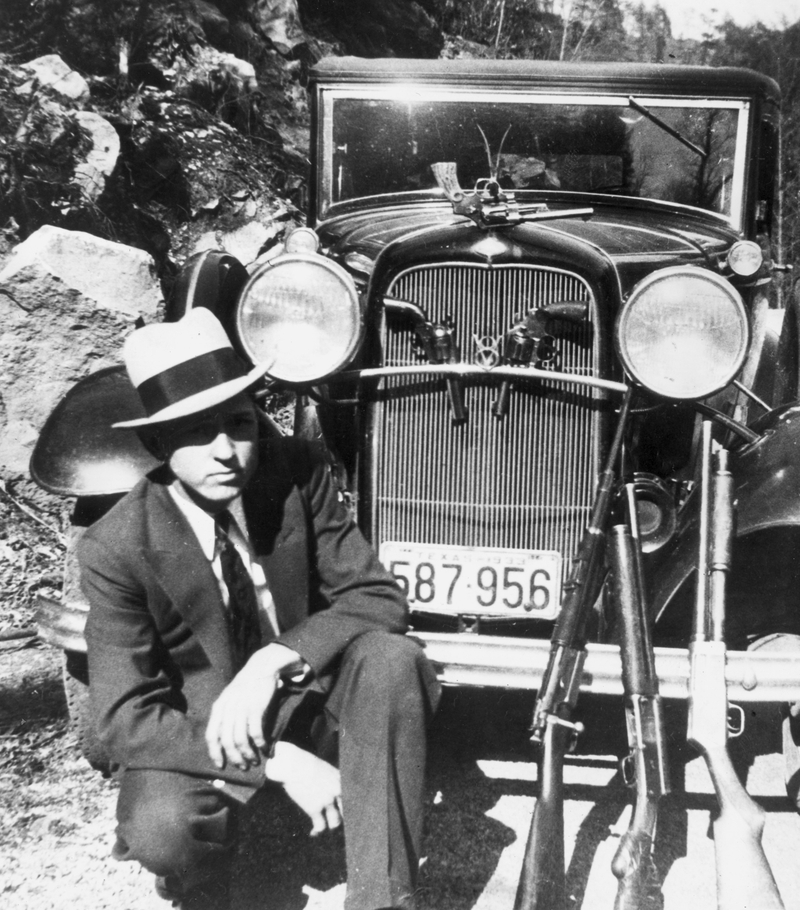
Then, when two policemen were murdered back in Texas and fingers were pointed at Bonnie – they had had enough. There was public outrage and demands for the couple to be taken out.
Their Time Was Up
But their luck was bound to run out eventually, and everyone knew it. The authorities weren’t going to stop trying until Bonnie and Clyde were off the streets - dead or alive.

Nearly a year after barely escaping the shoot-out in which Buck lost his life, Bonnie and Clyde found themselves taking another barrage of bullets in a vehicle (a stolen vehicle.) This time, they wouldn’t be so lucky, either.
End of an Era
On May 23rd, 1934, Bonnie and Clyde’s two-year long spree of crime would finally come to an end. The public couldn’t have been more thrilled to hear the news.
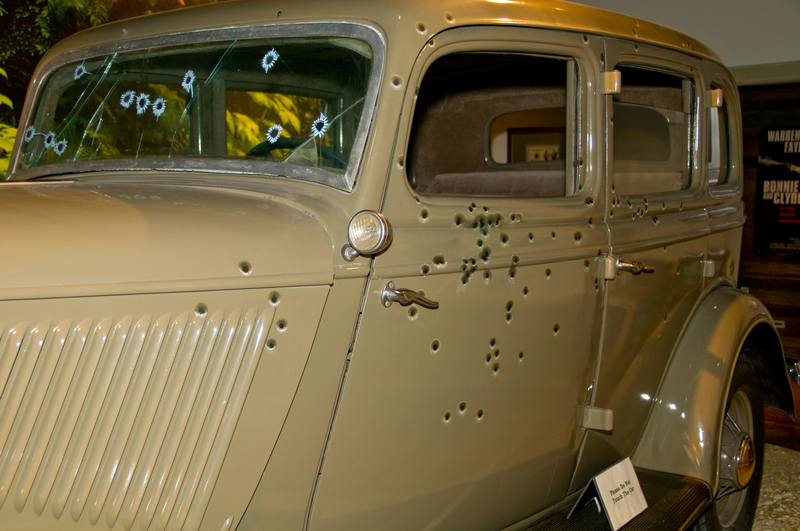
In part because it meant they could feel a little safer, and the other part because everyone loves a tragic end to a good love story. But that would hardly be the last they’d see of the infamous young gangsters.
Their Story Became a Movie
In 1967, Hollywood would be responsible for raising the dead, in the form of the Bonnie and Clyde film directed by Arthur Penn. The film starred a young Faye Dunaway and Warren Beatty, who also helped behind-the-scenes as a producer.

It has been widely regarded as one of the best gangster films of all time.
Other Women Criminals
"Bonnie and Clyde" was hailed as being revolutionary. There hadn’t been too many films about real gangster women, much less couples, at that point in time. But before this young couple took Texas by storm, there were other tough women who stirred things up in their towns, too.

Perhaps you’ve heard of a woman known as Calamity Jane. She published an autobiography in 1896 that detailed her exploits, which were definitely not something common of women in her time.
Calamity Jane
“Calamity Jane” was born as Martha Jane Cannary. When she published her diary, it shocked the public, and it continued to do so for ages - until a large part of it was debunked.

Although it’s no secret that Martha led a troubled life, there’s also no question that she stretched the truth of that life for her stories.
She Documented Everything
Cannary detailed her life in her tell-all account, starting with the year of her birth. But researchers would later lay claim to the fact it was proven she was indeed born several years after what she originally said.

And that was far from the only truth she seemed to stretch in the book, "The Autobiography of Calamity Jane."
Living Off of Gold
Everyone had to scramble for ways to survive in Cannary’s days. That meant that a lot of the women wound up in brothels. But there was something that existed that could save Jane’s family from a life in poverty and despair: gold.

And there was plenty of it in Montana. The family loaded up and headed west.
Family Troubles
Life in those times was no easy feat. Disease ran rampant and without modern medical care, there was very little anyone could do about it. Charlotte, Jane’s mother, developed pneumonia that killed her not long after their arrival in Montana.

Her husband, Jane’s father, Robert, knew he had to think of something fast or his family was in trouble.
She Had to Lead the Family
But it wasn’t long before Robert passed away, too, leaving behind five children. Martha, who was the oldest of them all, felt weighted down by the responsibility.

But she put her feelings aside and jumped into action to help take care of her younger siblings.
Heading South
What was the 14-year-old to do to care for a family of five? She knew that Montana obviously wasn’t the answer, considering the fact it had killed her parents.

So, she packed her brothers and sisters up and headed south towards Wyoming. It was there when she would start to really grow into her own.
The Provider
Luckily, Jane was able to support herself and her family through a series of odd jobs. She would do anything she had to do to care for her brothers and sisters.

Typically, it meant things like cleaning glasses at the cantina or driving oxen, but it’s also been speculated that she occasionally worked in a brothel as a teen, as well.
A Real Sharpshooter
But in her spare time she liked to hang out, shoot guns and ride horses with soldiers. In fact, she described in her book that she became known for having a “remarkable good shot” and being a “fearless rider” for being a teenager, and a woman.

If Jane was telling the truth, General Custer himself was so impressed with her shot that he recruited her into the US military.
Doing Everything to Get By
In the late 1800s, it was common for young women to work as escorts to support themselves and their families. Martha Jane was no different.

Sure, she also may have had a killer shot, but when she needed to put food on the table, she had no issues getting her hands dirty. Calamity Jane was not a woman who apologized for doing what she needed to do to get by.
Meeting Wild Bill
In 1870, Jane worked as a count alongside General Custer, at Fort Russell in Wyoming. But perhaps even more infamous was her time at Fort Laramie.

It was around that time that she first met Wild Bill Hickok. The two hit it off almost instantly, probably thanks in large part to the fact they both drank like fish.
The Legend Was Born
But it wasn’t until a few years later that she would become the person everyone knows her as through her writing.
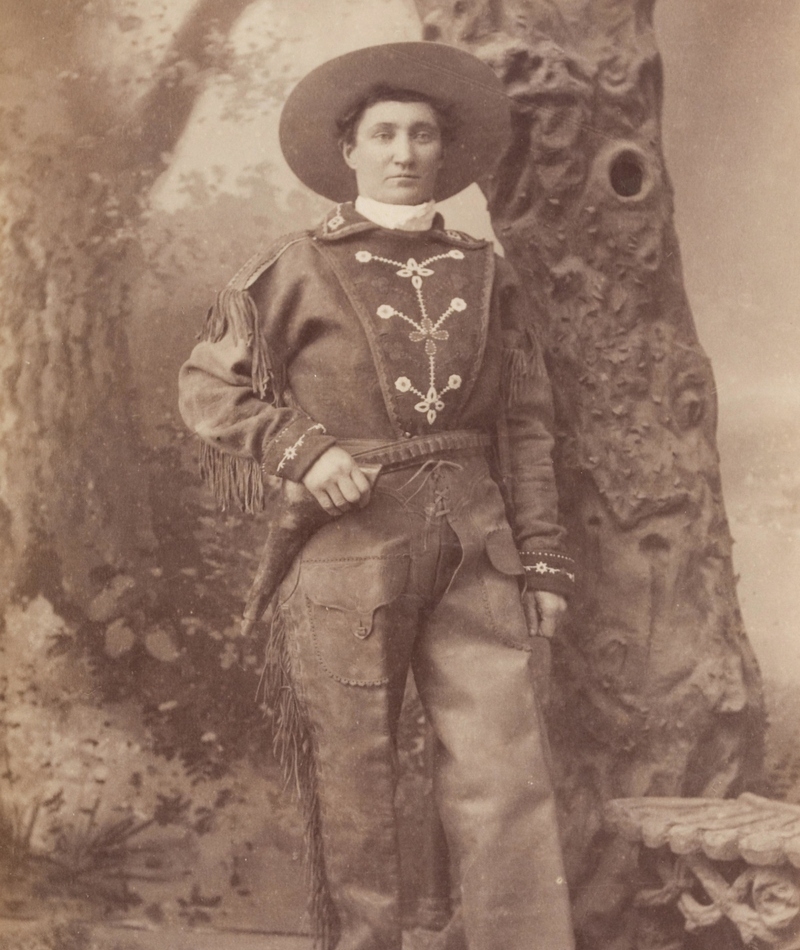
It was then that she would earn her name. It was in 1873 that Calamity Jane was officially born.
The Story Behind the Name
The name "Calamity Jane" was given to her after a raid on a Native American village went wrong. Jane risked her own life to save her captain from certain death after he had been shot.

And, according to her tales, the captain thanked her by gifting her with her infamous nickname.
Historians Weren't Buying It
But after the stories were released, there were many who questioned the validity of the heroic tales.

After all, it does seem like quite a stretch that this guy, who’s bleeding out, takes the time to grab someone all Hollywood style and say, “I will call you Calamity Jane, for your bravery,” or something to that effect.
A Caring Individual
Even if some of the stories were stretched a little further than the truth, there’s no question that Jane led one hell of an interesting life. Unfortunately, a lot of it was filled with suffering.

But even with all of the weights that found their way to her shoulders, Martha Jane still found it in her heart to help others.
More Than Just Friends?
In 1876, she spent most of the summer working as a mail carrier in Deadwood, for Pony Express. She would spend her evenings drinking with Charlie Utter and Bill Hickok.

Some speculate that Hickok and Jane were more than just friends, but as far as she describes, they were just good drinking buddies.
Setting the Facts Straight
Wild Bill Hickok and Jane met on the train headed out to Deadwood. This fact was verified later by another person who was on the train at the time, which contradicts what Jane wrote in her autobiography.

Things like that little hiccup are a big part of the reason why her book should be taken with a grain of salt.
A Short Relationship...Perhaps
No matter how the two wound up spending time together, they did. Once they’d met, they hit it off instantly, and were often seen together out and about.

However, rumors of them being any more than friends were left unconfirmed. Jane didn’t know Wild Bill for very long before his impending untimely death.
The Deadman's Hand
The “Deadman’s hand” in poker is named for the way Wild Bill was killed. He was playing poker in a saloon, drinking with a group of men, when a very drunk man at his table got a little too upset about his losing hand.

The man, Jack McCall, left, but came back the next night, stormed through the doors and shot Bill. He was holding a pair of aces and eights: a Deadman’s hand.
Getting Revenge
Much like Bonnie would have done if one of her fellow gang members was killed - Jane got mad. But then, she set out on the hunt to get even. She wasn’t about to let the man who killed her friend over a game of poker get away with it.
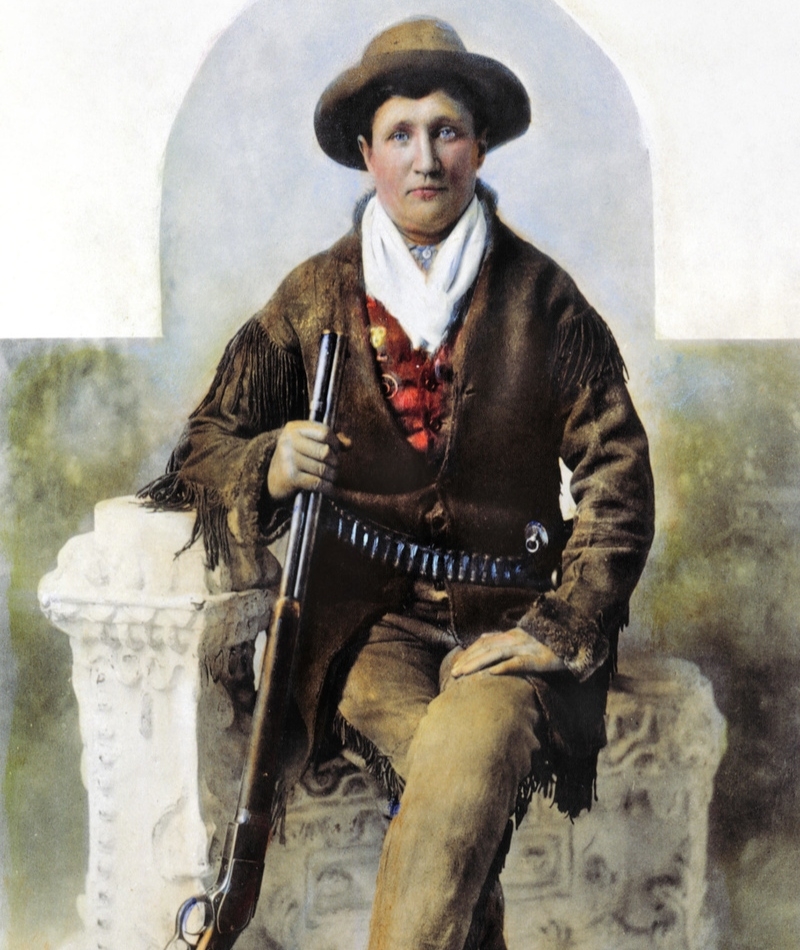
After all, she was Calamity Jane. Luckily, before she could get to him, the authorities caught up with him and he was killed by the system.
Gone Too Soon
In her early 50’s, Jane succumbed to pneumonia, before the doctor could get out to visit her. She may have passed on, but she would be anything but forgotten.

In fact, as is the case with so many people, her fame and following only increased tenfold after her death.
The People Remembered Her
The Deadwood public remembered her dearly. The local newspaper published a piece that spoke about her kind heart and warm personality.
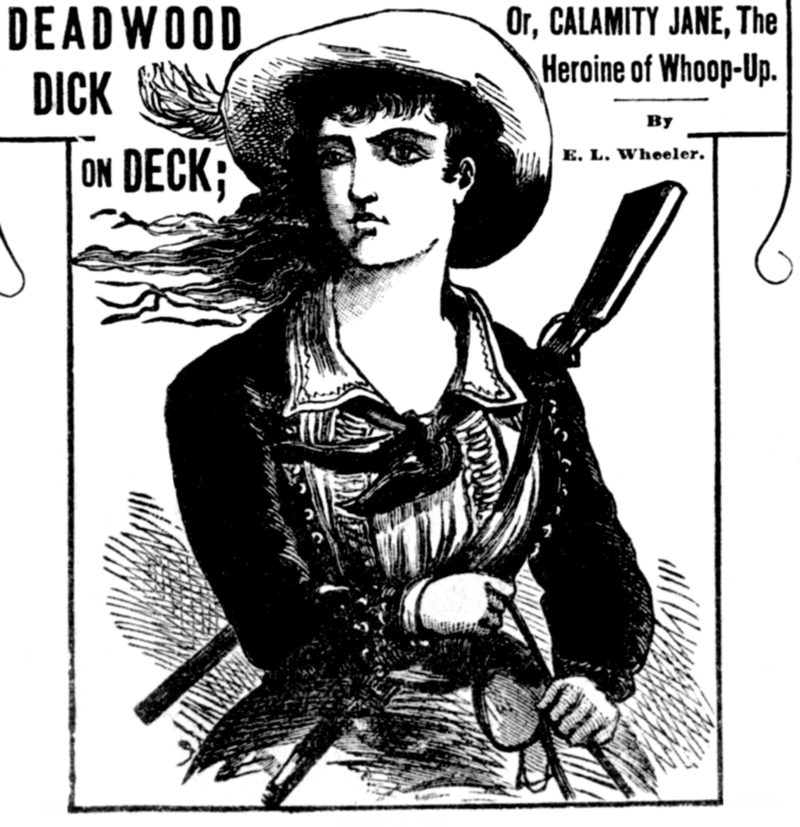
Depending on who you asked, you may hear a few different stories about Calamity Jane, but the consensus was all the same. She was a hard-drinking, sharp-shooting free spirit.
She Also Had Her Own Movie
In 1953, the technicolor Western musical film named after Jane hit theaters. It starred a young Doris Day and portrayed a romance with Wild Bill Hickok, while showing off her serious gunnery skills.

Of course, Day didn’t look much like the real Jane, but she did nail the ice-cold face you see in many of her photos.
Doris and Jane Were Nothing Alike
Doris Day was far from being the alcohol-loving, gun-toting girl from the prairie that Jane was. In fact, the two couldn’t have been any more different from one another in their actual lives. But Day’s amazing acting skills allowed her to portray her personality in the lighthearted musical comedy.
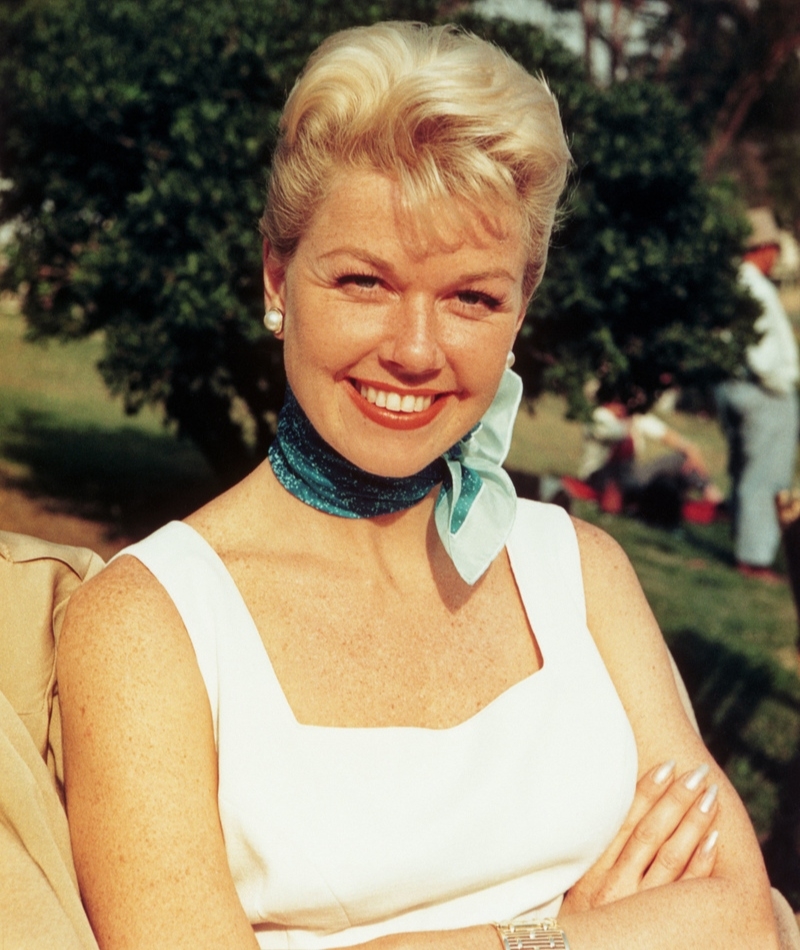
Day’s career began during Hollywood’s Golden Age, and took off thanks to her infectious smile and skills on screen.
Her Musical Roots
The actress was born in 1922 into a musical family. Her father, William, was a music teacher and choirmaster. She first got into the industry through dance, performing around Cincinnati with her partner, Jerry Doherty.

But in 1937, she was involved in a car accident that took her out of commission - temporarily, anyways.
A Close Shave
The accident happened when Day was just 13 years old. The car that she was in with her friends was struck by a train. Luckily, everyone managed to come out of the tragedy alive, but young Doris’ dancing career was halted.

Her right leg had been damaged so bad that doctors told her she wouldn’t walk for years - if ever again.
The Birth of a Voice
Can you imagine how this teenage girl was feeling, with all of her hopes and dreams for her future shattered by that one terrible moment? She spent a long time in the hospital, working on physical therapy to use her legs again.

While she was there, she started experimenting with her singing voice, singing along with music by Benny Goodman, Glenn Miller and Duke Ellington to pass the time during her stay, and discovered she actually had quite a talent for singing.
When Doris was 15, she may not have felt well enough to start training for dancing again, but she did decide to try her hand at professional music. First, she signed on to a local radio station as a female vocalist. But it was her on-air performances that caught the attention of big band artist, Barney Rapp.
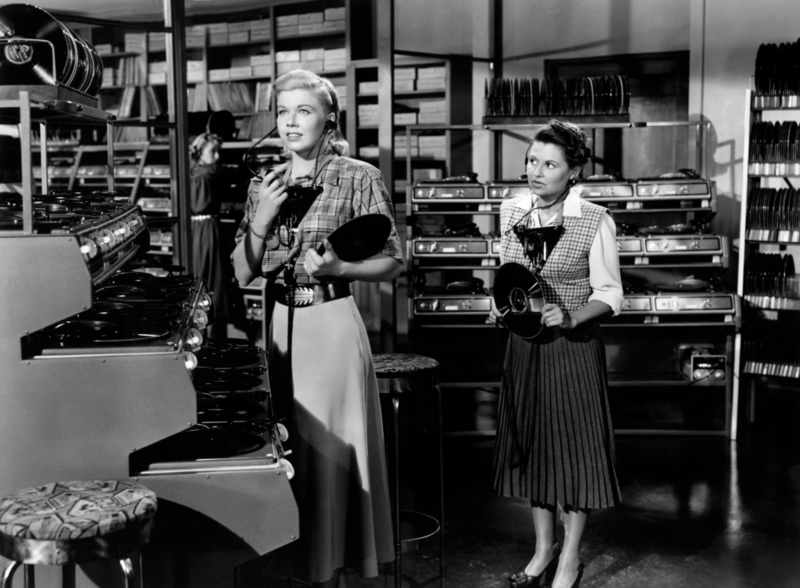
It was with his band, Barney Rapp and his New Englanders, that her career really took off.
The young Doris looked up to another singer of her time, one she saw as somewhat of an idol. She really loved to listen to Ella Fitzgerald’s music during her early days in the industry.

She told journalist A.E Hotchner that, “there was a quality to her voice that fascinated me.” Soon, teenage Doris would be a thing of the past.
In 1941, Doris married trombonist Al Jorden – a move that would prove to be very unwise. As it turned out, Jorden was a violent schizophrenic and was very abusive towards her.

Nevertheless, the two had a son, Terry, who was born the year after they tied the knot. The couple met while working together in Barney Rapp’s band.
Doris and Al finally called it quits in 1943 and got a divorce. Doris left Terry with her mom in Cincinnati and went on tour with Les Brown. It was with his band, The Band of Renowned, where she would get her first taste of real, measurable success in the industry.

The year after she joined the group, they published the song “Sentimental Journey,” which found its way to number one on the charts.
But when exactly did Doris Day make the transition from bubbly big band performer to sultry Hollywood star? In 1948, she landed a starring role in "Romance on the High Seas", after she’d been spotted singing at a party by a famous songwriter who personally invited her in for a screen test.

After she made a great impression on screen in her first role, she soon found herself getting call after call from people who wanted her in their films.
The film’s director, Michael Curtiz, absolutely loved Day’s audition. She admitted to him early on that her experience was in singing, not acting, but that didn’t seem to bother him one bit.

He would later report that discovering Doris Day was one of the proudest moments of his career. And the film was a hit, which launched an acting career that spanned two decades.
Over the span of just three years, from 1950-1953, six of her musical films made the top 10 at the box office. Of those six, half of them hit number one.

Up until that point, Day had been working with Warner Brothers, but once her contract was up in 1955, she decided not to renew it. But her career wasn’t going to slow down anytime soon. In fact, it was just about to skyrocket.
That same year, she nabbed the role of Ruth Etting, in "Love Me or Leave Me". The film would end up becoming the biggest hit of her career. Day even said herself that it was her best performance. And she wasn’t the only one. The Academy granted the film multiple awards, including the award for Best Writing and Best Music.

She is widely praised for her work in "Calamity Jane." Day quickly rose to become the queen of musical comedy. And everyone in Hollywood was dying to work with her.
In 1956, Day worked on the Alfred Hitchcock film, "The Man Who Knew Too Much". Until that point, she had only been doing musical comedies, so it was uncharted territory for the actress.

Of course, she still sang in the film, including one song, “Que Sera, Sera,” which won the Academy Award for Best Original Song.
Doris met fellow actor Rock Hudson when the pair worked together on the 1959 film, "Pillow Talk". The two stars hit it off instantly, and they lit the screen up with their combined energy. She later told People that it was easy to get along with Rock, and that he had a great sense of humor.

Critics and the public alike were invested in this on-screen partnership, and they were ready for more - and they didn’t disappoint.
Day and Hudson were back at it a few years after their successful first film. This time, it was in 1961’s "Lover Come Back", directed by Delbert Mann. They appeared in one more film together in 1964, before the tragic news of his AIDS diagnosis got around.

The actor passed away in 1985. Day would later recall in her interview with People that she believed the reason people liked them together so much is because “they could see how much we liked each other.”
Although Day’s career lasted for decades, the shift in Hollywood’s demand would likely mean the end of her popularity. After all, here she was, the all-American girl who was sweet and naive. But as the Golden Age started to give way to a new tide, the demand for that type of character started to fade away.

Unfortunately, she would find herself dealing with much more pressing issues.
Day had been married four times by the time of her death. In the 1960s, she was with her third husband, producer Martin Melcher. The couple started their own production company in 1952, called Arwin Productions. Of course, the majority of films they made starred Day.

But in 1968, fate would take a turn for the worse, when Melcher passed away. Doctors later told Day it was due to an enlarged heart.
But the death of her beloved husband wasn’t the only bad surprise the actress got that year. In dealing with the after-death finances, she was shocked to learn that Melcher, along with his lawyer, Jerome Rosenthal, had basically robbed her blind.

Not only did they spend loads of her money, they spent so much of it that she was now over $500,000 in debt.
Losing her husband and finding out that he was responsible for her going broke, and a half a million dollars in debt was bad enough, but that wasn’t even the end of her troubles. It turns out that before Melcher died, he’d signed a deal for her to do a sitcom - and she was not happy.

She’d made it perfectly clear to him that she would rather die than do a sitcom, and at this point, she was probably starting to feel less bad about him suddenly dying, and more so about how he’d completely betrayed her before he did.
She tried everything she could think of to get out of doing the show. But the contract had already been signed and she was locked in.
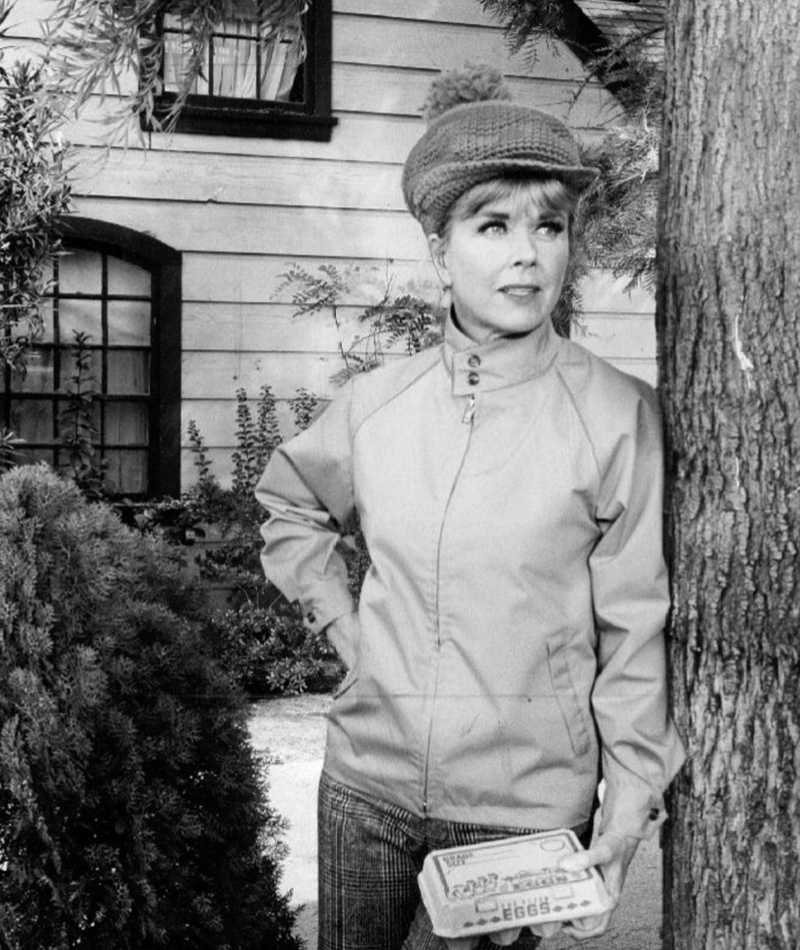
Fortunately, she took her power back when she and her own lawyer made changes to the contract that ensured her ultimate success. They also tried to make it as painless as possible on the actress.
The sitcom ended up being named "The Doris Day Show" - which gave her a certain amount of pull when it came to how everything went behind (and in) the scenes.

In fact, she was free to do basically anything she wanted when it came to how a majority of things went, such as the script and actors.
"The Doris Day Show" ran on CBS for five years, from 1968 to 1973. It was known for its major changes between seasons, including a plethora of cast members.

Although Martin Melcher had signed Day up for the show without her knowledge and consent, he was still given the credit of “executive producer” for season one. But after the first season, Day gained a bit more control over what went on.
Although she may not have wanted it originally, she seemed to really come into her own on the show. For the first three years, it operated as a family sitcom, until it radically shifted in the fourth year to focus more on Day as a single woman.

It was in those years that everyone wanted to see more daring and dangerous female characters, and were starting to get tired of seeing the same old type of “man marries woman, has child and works until he dies, rinse and repeat” type of deal.
During the early 1970’s, Doris decided to focus her energy outside of work on a good cause. She had always been an advocate for animal rights, but now she was in a position where she could start her own animal rights organization - and that’s exactly what she did.
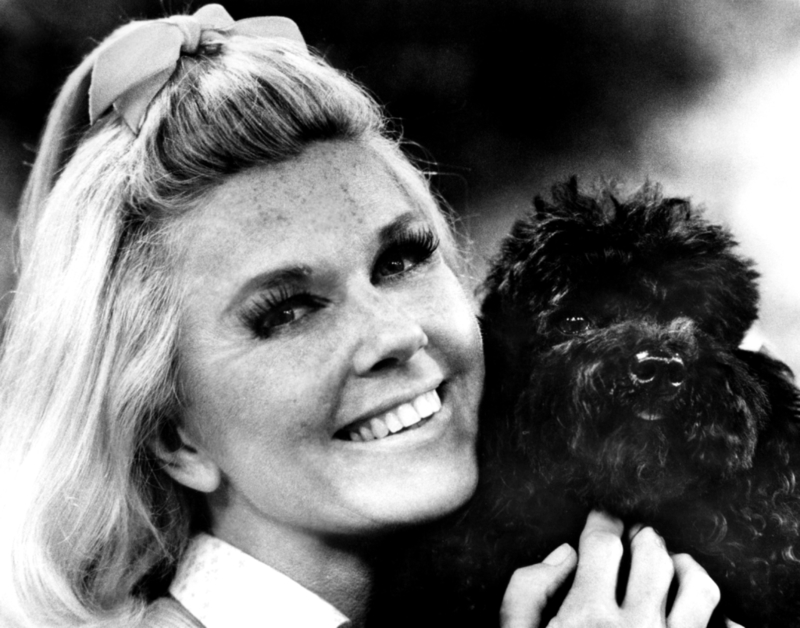
She launched the Doris Day Animal Foundation, which works to support rescues, spay and neuter programs for strays, and abused and/or neglected animals.
Doris Day was one of the first celebrities who realized that their celebrity power could be used as a voice for those who have none of their own. Long before she started her own animal welfare foundations, she was championing for the cause. In 1971, she started Actors and Others for Animals.

While filming "The Man Who Knew Too Much" in Morocco, she would take time to feed the strays, and try and figure out ways to help the locals better care for them.
In May of 2019, Doris Day passed away in her home in California, after succumbing to the ill effects of untreated pneumonia. Her legacy today is carried on through her animal welfare organizations.

Plus, she will always be immortalized in so many different roles, including the tough but funny, sharpshooting girl, Calamity Jane. She also has one grandchild, Ryan Melcher, a realtor in Carmel, California.